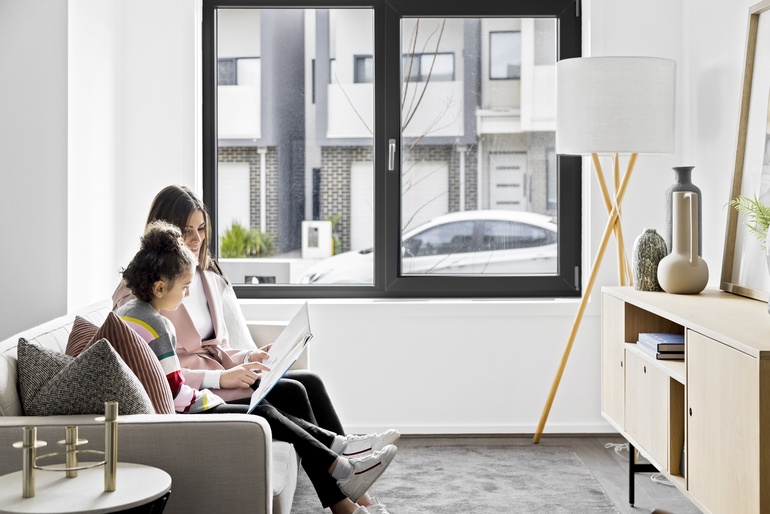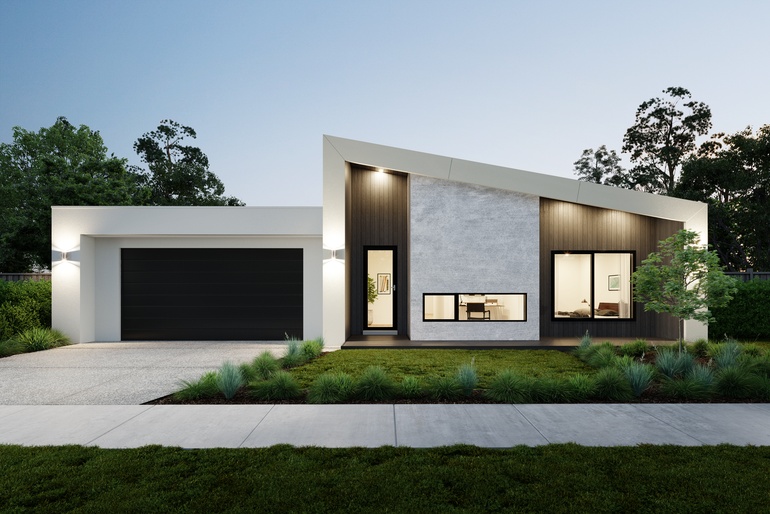Green Star Homes Unpacked: Going green at home? Check this guide first
28 Oct 2022
If you’re embarking on a sustainable renovation or new build, how do you find an eco-friendly architect or designer? What questions do you need to ask, how do you find other professionals and what about sustainable materials? In the latest article for Green Star Homes unpacked, Elham Monavari, Senior manager of Green Star operations transformation, joins other experts to answer these questions and more.
Why is it a good idea to hire a sustainable architect or designer?
So, you’re planning a new build or renovation and have heard of ‘eco-friendly’ architects and designers, but is it really worth considering one?
Most design experts would agree yes – both for the earth and our loved ones. “Buildings, including our houses, are responsible for 40 percent of global energy consumption, and 33 percent of global greenhouse gas emissions, according to the latest figures from the World Economic Forum. Building sustainable and energy-efficient homes is one of the key tenets to tackling climate change,” says Kimberly Mickelburough, director at architectural practice Chaulk Studio. “The upside for homeowners is that sustainable and energy-efficient homes are healthier for our families and significantly cheaper to operate.”
So what exactly is a sustainable architect?
“A sustainable architect is someone who will look at your home and come up with strategies that maximise elements such as its orientation in order to welcome in the warming sun in winter and cooling breezes in summer. There are simple solutions that can increase the liveability of your home, decrease its running costs and lighten its environmental footprint,” says Elham Monavari, senior manager of Green Star operations transformation at the Green Building Council of Australia.
“Once you’ve addressed these passive elements, they will then go further by considering window glazing, roof colour, energy- and water-efficient appliances and even removing fossil fuels from your home, such as gas,” says Monavari.

While it sounds like a lot of work, she says it’s well worth it. “In Australia, most of our homes are too hot in summer and too cold in winter, but at the same time our home is considered the most important purchase we’ll ever make – and certainly the most expensive. Getting the design right will help you get the most out of your home, for the long-term.

Where can I find a sustainable designer or environmentally friendly architect?
The best place to look for an eco-friendly architect near you is on Houzz.
On a computer, click ‘Find Professionals’, select ‘Architects’, then under the drop-down ‘Highlights’ menu look for ‘Eco-Friendly’.
Or, under the ‘Project Type’ drop-down menu, you can click on ‘Energy-Efficient Homes’, ‘Green Building’ or ‘Sustainable Design’.
To find a local sustainable interior designer, repeat the process above, but select ‘Interior Designers & Decorators’ instead of ‘Architect’.
According to Monavari, there are also a number of organisations that can direct you to a sustainable design expert, such as an eco-friendly architect or an eco-friendly building designer, including:
- Australian Passive House Association
- Green Star Accredited Professionals listed on the Green Building Council Australia
- Australian Building Sustainability Association
And it’s not just custom-designed homes that can get the green treatment. “We’re also working with volume home builders who are currently building the first Green Star-certified homes,” says Monavari.
What questions should I ask a sustainable designer?
“The best way to avoid a tokenistic or aesthetically driven response to environmentally sustainable design is to ask questions about your project at the outset, specifically the designer’s approach and what their potential solutions might entail. For example, how will they respond to the site and the existing conditions to best maximise the potential of your home?” says Lisa Breeze, architect and principal at Lisa Breeze Architect.
“Ask the architect or designer about their credentials and their approach to environmentally sustainable design specific to their own home, and request to see examples of previous work.
“A design professional who has completed the Passive House course and is accredited by the association could be beneficial as they will have an in-depth knowledge of the exemplar building systems associated with this approach,” she says.
“You can also ask about what strategies they employ to designing a sustainable home,” says Mickelburough. As an example, the sustainable strategies at Chaulk include:
- Siting and orientating a house for best solar performance and ventilation.
- Ensuring the glazing-to-footprint ratio is correct.
- Specifying double- or triple-glazed windows.
- Ensuring the home has a high-performance thermal envelope and that the walls, roof and floor are highly insulated and have appropriate thermal mass.
- Specifying natural, durable, locally sourced, low-embodied energy materials.
- Installing a photovoltaic [solar power] system of a minimum 6kW in size.
- Specifying electric-only appliances that can be powered by the home’s photovoltaic system, such as an electric oven, induction cooktop, heat-pump hot water system and reverse-cycle heating/cooling.
- Installing a water tank.
If I'm building or renovating an environmentally sustainable design, do I need a painter with eco-cred too?
In a word, yes. VOCs (volatile organic compounds) are the toxic nasties commonly found in paint that give off that ‘new paint’ smell – which can last for days and even years, in some cases.
“When VOC concentrations in the home are high, which is usually after painting, building works or when new furniture has gone in, it can cause the occupants headaches, eye irritation, nausea, loss of coordination and can lead to damage of the liver, not to mention being bad for the environment,” says Monavari.
“Low-VOC paint, which is readily available nowadays and is generally no more expensive than highly toxic paint, is better for the environment and the health of your home’s occupants. So, if you are hiring a painter, ask them to make sure they’re using low-VOC paints,” she says.
Paint isn’t the only product that contains VOCs – timber floor sealants typically do as well. You can go green by choosing environmentally friendly timber sealer, such as those from Livos or Osmo (Polyx Oil), says Mickelburough.

And don’t forget to ask about a professional’s clean-up plan, says Breeze. “How they dispose of paint waste is just as important a consideration as the type of paint they use.”
How do I find a sustainable painter?
You can find an eco-friendly painter near you in seconds on Houzz. Under ‘Find Professionals’, click on ‘Painting & Wallpaper’, then under the ‘Highlights’ drop-down menu search for ‘Eco-Friendly’.
How do I find a sustainable joiner?
Choosing eco-friendly wood and glues for joinery is an important component of any sustainable project, as is finding an environmentally conscious joiner or cabinet maker. On Houzz, go to ‘Find Professionals’, click on ‘Joinery & Cabinet Makers’, then under the ‘Highlights’ drop-down menu select ‘Eco-Friendly’.
“When building or renovating your home, you may need to replace your kitchen or bathroom floors or your joinery. There are two key considerations to assessing materials [with a sustainable eye]: certified timber and low-formaldehyde joinery,” says Monavari.
“When speaking to a joiner, ensure they know your aspirations, and ask them where their materials are coming from and whether they are certified as responsibly sourced by schemes such as the Forest Stewardship Council (FSC) or Responsible Wood.”
“Another consideration [when specifying timber and timber products] is formaldehyde, which is a form of VOC,” says Monavari. “It comes from the resins that act as glue for engineered wood products and it can be measured.” Monavari recommends asking your joiner to meet the following formaldehyde-emissions limit:
- Less than one for plywood, MDF and laminate veneer, and less than 1.5 for particle board.
Mickelburough concurs, adding “Joinery is a high-use element [in the home] and, as such, it should be natural and durable enough to stand the test of time,” she says. “Joinery consists of a substrate of plywood, particle board or MDF, and it is important that these materials are specified to be E0 formaldehyde-free [where the amount of formaldehyde released is less than or equal to 0.5 mg/l],” she says.

“Benchtops should be selected for durability [in a sustainable kitchen]; good options are porcelain, natural locally sourced stone, low-silica content engineered stone, and locally sourced FSC-certified hardwood,” says Mickelburough.
“Good green options for cabinet fronts are FSC-certified plywood (although not in large panels as it is prone to bowing), locally sourced FSC-certified timber veneer, FSC-certified laminates, or painted board finished with an eco-friendly paint or stain.”

More
Would you like to see more sustainable building advice? Read how to up the eco cred of your home here with this story – Part 1: Six Ways to Make Your Reno or Build More Sustainable
This article was written by Georgia Madden and originally published at houzz.com.au you can read it here.